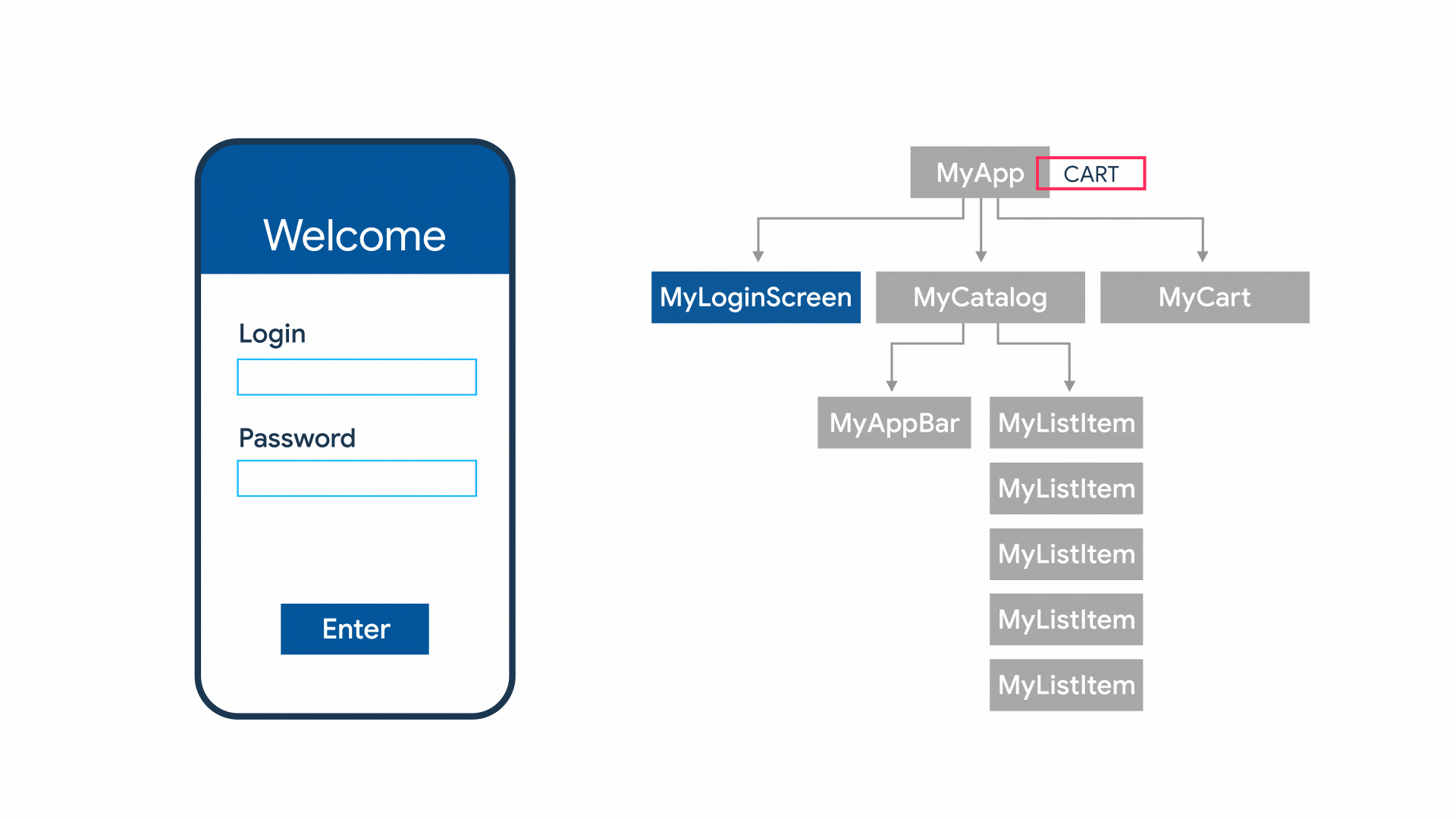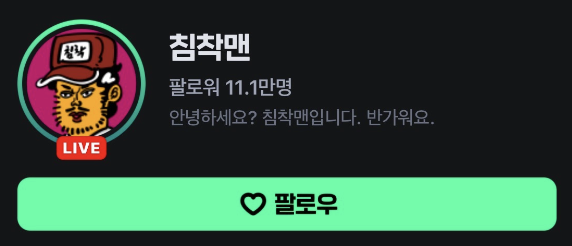[TOC]
State management
State를 여러 widget에 걸쳐서 관리해야하는 필요성이 생김.
StatefulWidget의 역할:
- state관리
- re-rendering(값이 바뀌었을 경우)
How to?
Flutter에서 기본으로 제공하는 방법과, 상태 관리를 손쉽게 할 수 있도록 해 주는 여러가지 라이브러리 등을 이용해서 구현 가능합니다.
Value Listenable
변수를
ValueNotifier로 선언하고ValueListenableBuilder위젯을 사용해서 해당 변수가 변할때 다시 렌더링을 시도할 수 있습니다.
Provider
상태 관리 패키지 중 하나로,
InheritedWidget의 기능을 이용한 패키지.ChangeNotifier를 상속한 클래스를 만들고1 2 3 4
class CountAppProvider extends ChangeNotifier { int count = 0; ... }
ChangeNotifierProvider를 이용해서 해당 클래스 의존성을 주입해주고1 2 3 4
ChangeNotifierProvider<CountAppProvider>( create: ((context) => CountAppProvider()), child: SomeApp(), );
Consumer위젯을 이용해서 해당 변수가 변할때 다시 렌더링을 시도할 수 있습니다.1 2 3 4 5
Consumer<CountAppProvider>(builder: (context, value, child) { return Scaffold( appBar: appBar(title: 'Count:${value}'), ), );
Riverpod
상태 관리 패키지 중 하나로,
Provider의 확장형 같은 느낌?StateProvider등의 클래스를 이용해서 변수를 만들고1
final StateProvider<int> _count = StateProvider<int>((ref) => 0);
Widget 자체를
ConsumerWidget을 상속해서 만든 후,1 2 3 4 5
class CountScreenWithRiverpod extends ConsumerWidget { Widget build(BuildContext context, WidgetRef ref){ ... } }
ref.watch(count),ref.read()등을 이용해서 해당 변수나 state에 접근
Bloc
상태 관리 패키지 중 하나로, 대형 프로젝트에 가장 적합함(overhead가 크다 but 유지보수와 안정성이 좋음)
event와 state를 각각 정의하고, 두개를 bloc이라는 하나의 단위로 묶어서 사용하는 방식
Getx
상태 관리 패키지 중 하나로, 가장 쉬운 편
GetxController를 상속해서 컨트롤러를 만들고1 2 3 4 5
class CounterController extends GetxController { final _count = 0.obs; int get count => _count.value; set count(int value) => _count.value = value; }
해당 컨트롤러에 state등을 저장한 후
Obx위젯을 이용해서 다시 렌더링을 시도할 수 있음1
Obx(()=>Text("count: ${Get.find<CounterController>().count}"))
- 배우기 쉽고 overhead가 적어 작은 프로젝트에 적합
Dependency Injection
DI (Dependency Injection, 의존성 주입) 은 외부에서 의존 객체를 생성하여 넘겨주는 것.
예를들어, A 클래스가 B 클래스를 의존할 때 B 클래스의 인스턴스를 A 가 직접 생성하지 않고 외부에서 생성하여 넘겨주면 의존성을 주입했다고 합니다.
유저가 버튼 클릭 시 서버에서 data를 가져오는 앱이 있다고 가정
- 버튼 UI => Widget으로 flutter에서 구현 가능
- 서버에서 Data를 가져오는 logic => 분리해서 클래스를 생성가능.
- 클래스는 만들었는데, 객체니까 instance화 해서 써야 함.
1
2
3
4
5
6
7
8
9
10
11
12
13
14
15
16
17
18
class ButtonUI extends StatelessWidget{
Widget build(context){
return ElevatedButton(
onPressed: () {
final api = SomeApiClass();
api.fetchFromServer();
},
child:Text("Click!!"),
);
}
}
class SomeApiClass{
Future<void> fetchFromServer() async {
http.get() ...
...
}
}
-> 근데, 기획자의 요청으로 버튼 하나가 추가되어 그 버튼도 서버에서부터 data를 가져오게 만들어야 한다.
-> 서버에서 api를 가져오는 클래스를 재활용하고 싶다.
-> 하위 위젯에서 사용하기 전에, 상위 위젯에서 Dependency Injection을 해 주고,
-> 하위 위젯에서 해당 DI를 통해 주입된 instance를 사용할 수 있게 하면 되지 않을까?
- -> 이 방법을 도입하면 State만 UI와 분리되어 개발할 수 있을 뿐만 아니라 logic자체도 분리해서 개발할 수 있지 않을까..?
Design pattern의 문제
Getx
해당 패키지를 사용하려면 pubspec.yaml 파일의 dependencies에 해당 줄을 추가해주어야 합니다.
1
2
3
4
5
6
7
8
9
10
11
12
13
14
15
16
17
18
19
20
21
name: example
description: "A new Flutter project."
publish_to: "none"
version: 0.1.0
environment:
sdk: ^3.5.1
dependencies:
flutter:
sdk: flutter
get: ^4.6.6
dev_dependencies:
flutter_test:
sdk: flutter
flutter_lints: ^4.0.0
flutter:
uses-material-design: true
사용 예시
counter_page.dart
1
2
3
4
5
6
7
8
9
10
11
12
13
14
15
16
17
18
19
20
21
22
23
24
25
26
27
28
class CounterPage extends StatefulWidget {
const CounterPage({Key? key}) : super(key: key);
@override
_CounterPageState createState() => _CounterPageState();
}
class _CounterPageState extends State<CounterPage> {
int counter = 0;
@override
Widget build(BuildContext context) {
return Scaffold(
floatingActionButton: FloatingActionButton(
onPressed: () {
setState(() {
counter++;
});
},
child: Icon(Icons.add),
),
body: Center(
child: Text("Counter Page $counter"),
),
);
}
}
위의 코드를 getx를 이용해서 다시 써 보겠습니다.
counter_controller.dart
1
2
3
4
5
6
7
8
import 'package:get/get.dart';
class CounterController extends GetxController {
final _counter = 0.obs;
int get counter => _counter.value;
set counter(int value) => _counter.value = value;
}
counter_page.dart
1
2
3
4
5
6
7
8
9
10
11
12
13
14
15
16
17
18
19
20
21
22
23
24
import 'package:example/app/feature/counter_controller.dart';
import 'package:flutter/material.dart';
import 'package:get/get.dart';
class CounterPage extends StatelessWidget {
const CounterPage({super.key});
@override
Widget build(BuildContext context) {
final controller = Get.put(CounterController());
return Scaffold(
floatingActionButton: FloatingActionButton(
onPressed: () => controller.counter += 1,
child: const Icon(Icons.add),
),
body: Center(
child: Obx(() {
return Text("Counter Page ${controller.counter}");
}),
),
);
}
}
Getx 사용 팁
controller에 static + getter
1
2
3
4
5
6
7
8
class CounterController extends GetxController {
static CounterController get to => Get.find();
final _counter = 0.obs;
int get counter => _counter.value;
set counter(int value) => _counter.value = value;
}
- 이렇게 사용 시 CounterController.to으로 바로 접근 가능
initState와 dispose 적극 사용
1
2
3
4
5
6
7
8
9
10
11
12
13
14
15
16
17
18
19
20
21
22
23
24
25
26
27
28
29
30
31
32
33
34
35
class CounterPage extends StatefulWidget {
const CounterPage({Key? key}) : super(key: key);
@override
_CounterPageState createState() => _CounterPageState();
}
class _CounterPageState extends State<CounterPage> {
@override
void initState() {
super.initState();
Get.put(CounterController());
}
@override
void dispose() {
Get.delete<CounterController>();
super.dispose();
}
@override
Widget build(BuildContext context) {
return Scaffold(
floatingActionButton: FloatingActionButton(
onPressed: () => CounterController.to.counter += 1,
child: const Icon(Icons.add),
),
body: Center(
child: Obx(() {
return Text("Counter Page ${CounterController.to.counter}");
}),
),
);
}
}
- dependency를 적절하게 관리 가능
- 위젯이 사용되지 않을 시 자동으로 삭제 가능
디렉토리 관리 팁
1
2
3
4
5
6
7
8
📦lib
┣ 📂app
┃ ┗ 📂feature
┃ ┃ ┗ 📂counter
┃ ┃ ┃ ┗ 📂logic
┃ ┃ ┃ ┃ ┣ 📜counter_controller.dart
┃ ┃ ┃ ┗ 📜counter_page.dart
┣ 📜main.dart
- feature > 기능 단위로 폴더를 구분한 후
- controller는 logic폴더 안에 넣고, page는 기능단위 폴더에 바로 넣어서 관리
ex)
1
2
3
4
5
6
7
8
9
10
11
12
13
14
15
16
17
18
19
20
21
22
📦lib
┣ 📂app
┃ ┣ 📂data
┃ ┃ ┣ 📂api
┃ ┃ ┃ ┣ 📜dio_api.dart
┃ ┃ ┗ 📂service
┃ ┃ ┃ ┣ 📜auth_service.dart
┃ ┃ ┃ ┣ 📜router_service.dart
┃ ┃ ┃ ┗ 📜storage_service.dart
┃ ┣ 📂feature
┃ ┃ ┣ 📂error
┃ ┃ ┃ ┗ 📜error_page.dart
┃ ┃ ┗ 📂home
┃ ┃ ┃ ┣ 📂logic
┃ ┃ ┃ ┃ ┣ 📜home_controller.dart
┃ ┃ ┃ ┃ ┗ 📜reels_controller.dart
┃ ┃ ┃ ┣ 📂widget
┃ ┃ ┃ ┃ ┗ 📜home_series_player.dart
┃ ┃ ┃ ┗ 📜home_page.dart
┣ 📜firebase_options.dart
┣ 📜main.dart
┗ 📜service.dart
실습
[프로필사진], [프로필 이름, 팔로워 수, 설명], [팔로우 버튼] 3개의 위젯으로 분리해서 개발 해 주세요.
profile_image.dart,profile_info.dart,profile_button.dart파일명은 다음과 같이 해 주세요.
3강의 마지막 실습 코드를 재활용합니다.
GetxController를 상속한 profile_controller.dart를 작성하여,
statefulwidget이었던 profile_button.dart와 profile_image.dart를 해당 컨트롤러로 대체 한 후 statelesswidget으로 변경 해 주세요.
- dependency 주입은
counter_page.dart에서 해 주세요.

